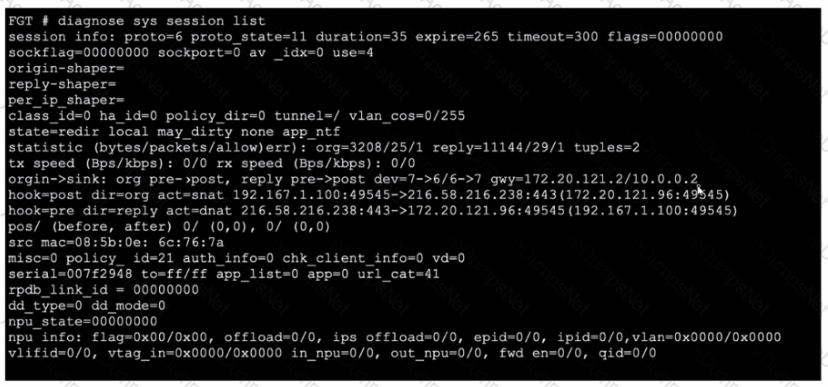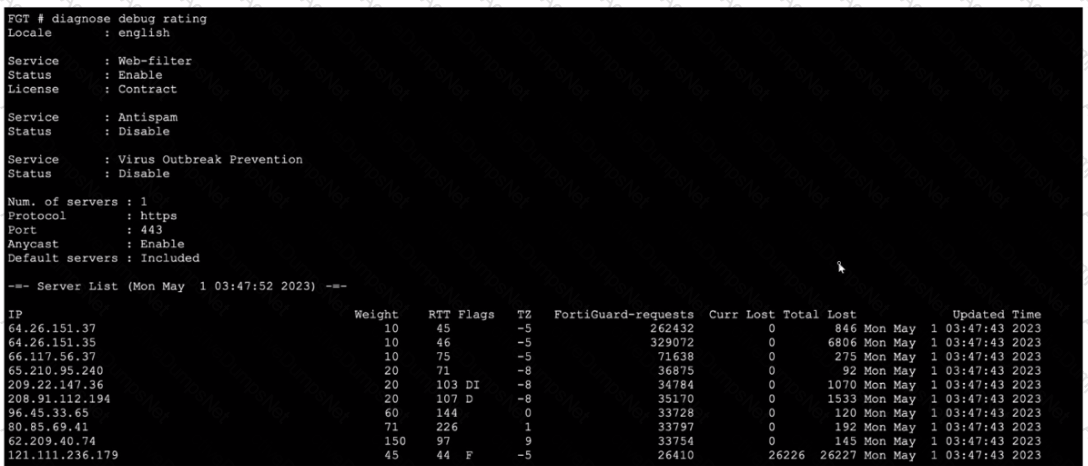Which three conditions are required for two FortiGate devices to form an OSPF adjacency? (Choose three.)
Refer to the exhibit, which shows two entries that were generated in the FSSO collector agent logs.

What three conclusions can you draw from these log entries? (Choose three.)
Refer to the exhibit, which shows a truncated output of a real-time RADIUS debug.

Which two statements are true? (Choose two.)
Exhibit.

Refer to the exhibit, which shows the omitted output of diagnose npu np6 port-list on a FortiGate1500D.
An administrator is unable to analyze traffic flowing between port1 and port7 using the diagnose sniffer command.
Which two commands allow the administrator to view the traffic? (Choose two.)
A)

B)

C)

D)

Refer to the exhibit, which shows a session table entry.

Which statement about FortiGate behavior relating to this session is true?
Refer to the exhibit. whichcontains the output of diagnose vpn tunnellist.

Which command will capture ESP traffic for the VPN named DialUp_0?

If the default settings are in place, what can you conclude about the conserve mode shown in the exhibit?
Refer to the exhibit, which shows the omitted output of FortiOS kernel slabs.

Which statement is true?
Refer to the exhibit, which contains the partial output of a diagnose command.

Based on the output, which two statements are correct? (Choose two.)
Exhibit.

Refer to the exhibit, which shows the output of getrouterinfo bgp neighbors100.64.2.254.
What can you conclude from the output?
Refer to the exhibit, which shows the output of a BGP debug command.

Which statement explains why the state of the 10.200.3.1 peer is Connect?

Refer to the exhibit, which shows the output of a diagnose command.
What can you conclude from the RTT value?